|
Tricky English Made Easy is a series to help students clarify concepts which are often difficult for learners of English. The use of BRING-TAKE-CARRY / FETCH-GET is problematic for students since, in many cases, the same verb for the different concepts can be used in other languages. CARRY is the easiest of all to explain since it involves TRANSPORTING WITH YOUR ARMS. The other verbs are best explained in the picture above (to download) in which I tried to make an explanatory diagram and in this excellent video by Vicki Hollett Simple English Videos: Come, Go, Bring, Take, Fetch, Get: Learn English with Simple English Videos https://youtu.be/ijuI7T-zpCM You can download the picture below. I hope you find this diagram as useful. Susan
6 Comments
A REAL BARGAIN is an amusing unit on the PASSIVE TENSE taken from Streamline English Departures (Hartley & Viney, OUP 1983) – my absolute favourite not only for teaching the passive tense but particulary for imparting a culture lesson on Houses in Great Britain. With its beautiful illustrations, rich housing vocabulary and amusing content – it makes a fun lesson on British culture. I usually ask students to read the text taking turns to be the Estate Agent and Mr. Palmer, the prospective buyer, stopping after each paragraph to explain the vocabulary and the passive tense as it develops:
As they read the story I ask very easy listening comprehension questions, paragraph by paragraph, which they do not have so they have to understand them and reread the paragraph to reply. I only explain the vocabulary and cultural habits we have as the story enfolds since I do not want to spoil the amusing ending to the story. Since I believe in full-immersion, I do not translate the vocabulary but define and illustrate on the board. This is also an opportunity for students to compare their homes and cultural housing traditions to the British ones – an opportunity for class discussion. VOCABULARY Estate Agent semi-detached house detached house cottage bungalow block of flats terraced house town house owners roof tiled roof thatched roof flat roof electrical wiring rewired redecorated (wallpaper is very common) wallpaper repainted central heating (as opposed to the old fireplace with the mantelpiece) brick stone services: - dustbins emptied - post delivered - milk delivered (the milkman with his silent electric van early in the morning) motorway It was only when a friend of mine came to visit my home in Italy that he opened my eyes to differences I had never considered: “Wow! You have real marble windowsills!” – British windowsills are made of wood which need to be constantly repainted to stop them from rotting. “You have beautiful wooden doors!” British doors are usually just painted over. “Your floors are solid marble or parquet!” British floors are loose floorboards with some kind of covering: carpet, lino… Any other main differences your students may have noticed watching films? Mine pointed out that in the USA and GB the kitchen sink is always in front of a window – true but I had never noticed. You can download the materials below. I hope you find this activity as useful and enjoyable as I do. Susan
The INTERRUPTION GAME: bombarding a classmate with questions – a fast and engaging speaking activity7/2/2016 The INTERRUPTION GAME: a fast, fun, highly effective and exciting no-prep speaking activity which engages all the class against one student.
Set your timer at 5 minutes. Choose a student to tell us their typical day from the moment they wake up till the moment they turn off the light to sleep. His aim is to get to the end of the day having given a very detailed account filling all the five minutes (no less – no more). The aim of the rest of the class is to stop him from getting to the end of his day by interrupting him with pertinent details regarding what he is saying:
The teacher listens and makes a note on the board of wrong questions or answers, which are only subsequently corrected altogether by the class guided by the teacher. I read about this activity in a blog about a year ago but cannot remember who to credit for it. In any case students tend to love it and participate eagerly with the consequential benefit of practice and learning. I hope you have fun with this activity. Susan There are teachers who feed information to students whether they like it or not and there are others who teach students to think – the latter are inevitably the best because they not only capture their students’ full attention but leave life-long learning lessons which go way beyond the subject they were teaching. Cattywampus is the story of such a teacher and I use it to practise reading this short piece aloud in class, verify vocabulary comprehension (see below) and get the students to tell us their own Cattywampus stories which we have to decide whether to believe or not. This activity is incredibly engaging for students (which we do in pairs) and the teacher has to inevitably go round helping with vocabulary to express their ideas. If you have an Interactive White Board you can READ IT ONLINE THROUGH LINGRO.COM to get vocabulary explanations: http://cbse-ncert-homework-help.blogspot.it/2013/09/best-teacher-i-ever-had-by-david-owen.html:
Once you have read the story ask students to answer the questions below the text to tell each other a story: what’s your opinion? Is it a Cattywampus? You can download the STORY with QUESTIONS below. I hope you have fun with this activity. Susan
Adults and children alike tend to sing songs often without thinking of their meaning. Christmas is a time for singing and I have broken down a Christmas song for teens and adults, Happy Christmas, as well as one for children, Rudolph, to practise adjectives and expressions. I start by singing the song, we then personalize the main sentences (see my sheets) to make them more meaningful for the students who will hopefully not only remember the new words and expressions repeating them in song but will also have fun doing so. You can download my sheets below. Feel free to delete or translate the Italian into another language. I hope you find the activity useful and enjoyable. Susan
Christmas adverts can be stimulating to use in class for language learning. This particular one is very rich in details so one can use it for vocabulary acquisition. Apart from asking the very specific questions on the sheets, I often expand by asking students to predict was is going to happen next as well as recounting what has just happened. A vocabulary rich Christmas activity to do in class or even autonomously at home: stop the video numerous times following the indications given and enjoy describing all the details of the kitchen in this fun disastrous Christmas with Mog, the cat. Excellent for revising and learning new vocabulary in the kitchen! Enjoy! You can download the sheets below. I hope you find the activity useful and enjoyable. Susan
A Christmas classic in two pages to practise scanning and listening comprehension skills is another way of approaching Dickens and acquiring exam skills. I summarized the story to be done in a one-hour lesson so as not to be too tedious and give a sense of completion. I first hand out the story (see download) or project it on the whiteboard and whilst I’m doing so they can skim it but most students already know the story from films or cartoons if they haven’t already read it. I divide the class into teams A and B. I then ask them questions on the text without the students being able to read them and the first person to find the answer in the text gets a point for their team. They have to read out the complete sentence to answer. This activity gives them listening, scanning, reading and pronunciation practice. It's more fun than just reading the story. There is also a GAP-FILL for homework but one has to first collect in the photocopies with the complete story on it. The competitive element makes it an exciting activity even for those participants who would normally be easily bored by reading a story. To encourage weaker or less collaborative students (I’m thinking of some teens) I sometimes nominate those students to receive 2 or 3 points each for their team, making sure there are an equal number of ‘specially nominated’ students in each team so as to be fair. You can download my three sheets below. I hope you find the activity useful and enjoyable. Susan
As the festive season nears it's nice to do language activities in the Christmas spirit even if our students come from a multicultural background or are atheist. I feel it should be seen by all participants in class not so much as a religious moment solely for Christians (the Church is the appropriate place for that) but as an opportunity to exchange cultural and religious traditions from all over the world. So,whilst I explain to students how the Christmas season is celebrated in Great Britain, I also take the opportunity to ask students of other faiths and non to tell us about their greatest celebrations during the year. It's very interesting to hear about other religious traditions and a moment of sharing. Just as interesting is to discover that many families in far off countries celebrate Christmas despite not being Christian as a day for families to reunite, spend time together and exchange presents. So, apart from singing traditional carols, modern Christmas songs and enacting the Nativity, students enjoy any language activity in a new festive season motif. An activity I read about a couple of years ago but cannot remember the source (please let me know if you recognise who invented this activity) is: GUESS WHAT'S INSIDE THE CHRISTMAS STOCKING! I adapted it into two versions: one stocking for beginners with a PDF of suggestions as to the contents (objects for children & teens) and another stocking for adults with just a few prompts on the language of speculation: It could be... It might be... It can't be.... I thinks it's... It must be made of... It rattles so... etc. This seemingly simple activity causes much speculation amongst participants young and old, keeping them fully concentrated and engaged for more than half an hour, feeling the shape and consistency of the objects through the stocking, trying to guess the materials they are made of as well. At the end the stocking is opened and the objects revealed! A fun, exciting and useful activity for all ages, learning to discuss what things look, feel like and are made of. You can download my two sheets and the audio for beginners. Hope you have fun with them, Susan
 The PRESENT SIMPLE contrasted with the PRESENT CONTINUOUS can be practiced easily with a fun game of ludo. I find that it is a recurrent problem which needs lots of practice. I usually draw a winding ludo board on the blackboard but you can also project the gameboard I have to download on the IWB or else even print a copy for a group of students to play on. I like to first revise the grammatical differences before dividing the class into two teams and getting them to throw the dice. Each team in turn answers the question according to the number they land on (having previously handed out the photocopied questions to them). If they answer correctly they can stay on the square where they just landed. If they make a mistake they go back to the previous square they were on. The first team to reach the FINISH is obviously the winner. The game is not at all as easy as it seems and sometimes two answers could be possible depending on interpretation. However, due to its challenging nature it is fun as well as being effective. You can download the game below. Hope you have fun with it! Susan P.S. I forgot to mention that because there are only 55 questions but 60 balls on the board, you then restart from the beginning and number 56 is equivalent to question 1, 57 = question 2, 58 = question 3, 59 = question 4 and 60 = question 5. This is to repeat the trickier questions at the beginning which sometimes lead students to give the wrong answer. The blue balls can be used or not - as you please. You could allow those landing on a blue ball to throw the dice again for example.
ACTIONS SPEAK LOUDER THAN WORDS: Try teaching and LEARNING GRAMMAR with fun repetitive songs - my experience is that even beginners can learn more complicated grammatical structures when they are used repetitively in a song. I added some prepositions and collocations to my originally simpler song. Try it out for yourselves - you'll be surprised!! You can download the song below: Have fun with it and learn! Susan
Before having children all my free time was dedicated to globetrotting and I had started writing a book about my travels.
I have always found writing about my personal experiences easier than writing about an imaginary situation which I have never been through. I therefore usually encourage people to base their writing work on something familiar to them and then adapt it to the written assignment making changes where necessary and enriching with adjectives and our imagination. This third post regarding some of my adventures is not only to encourage students to do likewise, thus practising their writing, but to stimulate people into class discussion on the topics students have written about and shared. Many of those stories are outdated as times change, countries develop... Should anyone like to comment & let me know how things have changed since I visited these countries, it would be welcome feedback. A WEARY TRAVELLER'S TALES Tragicomic Episodes from a Globe-Trotter's Diary As a young, well-travelled globe-trotter, I prefer visiting countries in order to get to know the people, their customs and traditions, rather than only seeing the sights from an air-conditioned bus after having left an anonymous first-class hotel. On my travels I have come across many tragicomic episodes worth recounting, which are not only amusing in themselves but offer a great insight into the ways and being of different peoples in far off countries. The best way to appreciate other mentalities and ways of life is to try and integrate oneself with the people by travelling with local forms of transport, eating in local restaurants and sleeping in hotels where one can mix with the locals rather than with tourists. CHINA Part 1 (written in 1987): Whichever form of transport one chooses in China, it is always an adventure. Trains for the foreigner seem to be the most exciting. The communications system is extremely poor so that one can only make seat/couchette reservations at least six days in advance and only from the original station of departure. If you happen to be travelling through the country and stopping off to visit towns for less than six days, as was my case, you can forget trying to make a reservation. Reservations cannot be made when boarding at intermediate stations, since they have no way of knowing which seat/couchettes were booked from the original station of departure. The only hope is to try once on the train. One of our longest train journeys started in Xian, where one can see the famous terracotta army. We managed to book two 'hard seats' (the other class is 'soft seats') and they turned out to be as hard as ever, with very straight backrests. Actually, it was quite interesting to see that once seated, everyone took out a little towel and hung it on a hook above their seats. I later discovered this served to wipe down the continuous streams of sweat that are inevitable in the summer heat despite the numerous fans (which for some reason work when there is the breeze caused by the train speeding along, but do not work when the trains stop at the stations, so that the heat is even more stifling). The next ritual for each passenger was to put a tin cup with lid on the little table jutting out between the facing seats. Into these they added a few tea leaves. Moments after the train left an attendant passed by filling the cups with boiling water from a giant kettle, kept warm on a fire burning between carriages. Thus began our scheduled five hour night journey to Luoyang, where we were to visit the Longmen Caves. Not having found room in the couchettes, we spent the night sharing our two reserved 'hard seats' with another two Chinese who managed to squeeze in, one of whom fell asleep with his head nodding on my shoulder. Eight sleepless hours later we got off at our destination. Having spent the day visiting Luoyang's sights, we bought our onward journey tickets to Beijing. No kind of reservation at all, of course, since this was an intermediate stop and reservations could only be made at Xian. The train was due to leave at 7.30 p.m. but on showing our tickets, we were told that the train was twelve hours late! Considering that Xian is officially five hours journey away, this seemed to be quite a record! We decided to catch the next train which brought us to Zengzhou, on the junction with the Beijing line. Whether this was unacceptable because the Chinese only catch direct trains, or because our tickets were only valid for the direct train was never clear to us. However, amongst heavy protest from the station attendants we boarded the train. At 11.30 p.m. we were at Zengzhou. According to our interpretation of the all-Chinese timetable, the next train to Beijing left at midnight. We lined up to have our tickets amended. After much incomprehension, obviously because what we were doing was not usual, our tickets were updated and we were accompanied to the waiting room area reserved for those leaving on the 6.00 a.m. train. We therefore settled down to our second sleepless night, hoping to steal a few hours nap by resting against each other. Impossible! A uniformed guard walked through the waiting room every half hour and violently shook awake anyone even vaguely dozing. There may have been a "No Dozing!" sign on the wall, but to us illiterate in the Chinese language, it was certainly not apparent. The journey to Beijing was no more eventful than any other that has been spent sitting on a train floor for ten consecutive hours in sweltering heat. However, it was fascinating watching with what dexterity small children were able to manoeuvre their chopsticks whilst eating on a jolting train. Unfortunately the hygienic advantages of modern packaging meant that all polystyrene lunch boxes were automatically thrown from the window of the moving train, littering the still medieval looking Chinese countryside. Subsequent shorter train journeys acquainted us with interesting games that the Chinese love to play. But however clean we all were when we boarded, on arrival our clothes were all a grubby grey, not to mention the dirt under our finger nails. It was only after quite a few trips that we realised this filth was due to the fact that the trains are all run on coal, leaving a sooty trail. For someone born in the electric/diesel train era, this was quite a revelation. * * * CHINA to be continued .... next episode coming soon! Have you ever had any tragi-comic experiences? Susan Repetitive NURSERY RHYMES with their easy rhythmic tunes and well-known NURSERY TALES lend themselves to SINGING and ACTING: two activities which children love doing!! Many years ago I ADAPTED three NURSERY TALES in increasing difficulty to RECYCLE the most important LANGUAGE we had learnt during the school year. Children loved it and parents enjoyed watching their children's progress. HAVING FUN was another key element to making sure they learnt EXPRESSIONS IN A MEANINGFUL CONTEXT. NURSERY RHYMES can also be ACTED OUT whilst they are being SUNG to consolidate their meaning and enable children to pronounce somewhat complicated sentences to PAVE THEIR WAY TO FLUENCY... GOLDILOCKS is the second in order of difficulty of the three to download with the pronunciation guide as well to help children practise alone at home. (See previous post dated 9th July 2015 for the easier LITTLE RED RIDING HOOD). In those days children had no other way of practising autonomously. Nowadays I prefer to RECORD AUDIOS of the pronunciations for them TO LISTEN TO REPEATEDLY all collected in a Dropbox folder for easy access. Try these out! Hope you have fun with it! Susan
Many language students tend to dedicate a long time studying rules and doing written exercises yet not many manage to apply them in spontaneous conversation. Despite exposure to texts and listening activities, unless they practise speaking intensively few are talented enough to be able to express themselves orally without sounding unnatural. For this reason I am trying to create useful songs and chants which incorporate repeating collocations, prepositions, phrasal verbs combined with movements to allow students to embed and practise their oral expression in a fun way and lasting manner without feeling bored or embarassed. I believe in 'learning by doing' and practising speaking can never be enough! The following song is about a pupil's DAILY ROUTINE: Download the VIDEO below to see the movements connected to the EXPRESSIONS in the simple song! (Unfortunately I could not upload the Video with subtitles due to 34MB size - I will gladly email it to you on request.) Try it out and have fun! Susan
This second post regarding some of my adventures is not only to encourage students to do likewise, thus practising their writing, but to stimulate people into class discussion on the topics students have written about and shared.
I have always found writing about my personal experiences easier than writing about an imaginary situation which I have never been through. I therefore usually encourage people to base their writing work on something familiar to them and then adapt it to the written assignment making changes where necessary and enriching with adjectives and our imagination. Before having children all my free time was dedicated to globetrotting and I had started writing a book about my travels. Many of those stories are outdated as times change, countries develop... Should anyone like to comment & let me know how things have changed since I visited these countries, it would be welcome feedback. A WEARY TRAVELLER'S TALES Tragicomic Episodes from a Globe-Trotter's Diary As a young, well-travelled globe-trotter, I prefer visiting countries in order to get to know the people, their customs and traditions, rather than only seeing the sights from an air-conditioned bus after having left an anonymous first-class hotel. On my travels I have come across many tragicomic episodes worth recounting, which are not only amusing in themselves but offer a great insight into the ways and being of different peoples in far off countries. The best way to appreciate other mentalities and ways of life is to try and integrate oneself with the people by travelling with local forms of transport, eating in local restaurants and sleeping in hotels where one can mix with the locals rather than with tourists. JAPAN (written in 1990): The Japanese are notoriously clean, leaving their street shoes at the front door. For the uninitiated foreigner this means a lot of practice is needed in slipper changing. Japanese Ryokan are small, but homely hotels in true Japanese style. At the entrance one encounters rows of street shoes neatly lined up under the first step which leads inside. On the step are numerous slippers ready to be donned by anyone who wishes to enter. Once inside these slippers are only to be worn in the halls, never in the rooms, which have 'tatami' mat floors on which one walks in socks or barefoot. Just inside the bathroom, whether private or shared, are other slippers. This means that if I leave my room to use the toilet, I must put on my hall slippers and take them off outside the toilet, because the toilet slippers are just inside. And wo betide the tourist who is caught walking around the hall with the toilet slippers he forgot to slip off again!! * * * Precision is another asset of the Japanese and having lived in Germany, I am quite used to it. However, lining up to catch arriving trains in Japan certainly amazed me. If you buy a ticket with a reservation, you need only to look at the numbered signs along the platform. Besides pointing out where your carriage will stop, the markings on the ground tell you exactly where to stand so you will enter the door which is nearest to your seat number. In fact the train halts exactly with its doors parallel to these markings. This is amazing considering the fact that the Shikansen Bullet Train travels at speeds of up to 250km per hour! * * * In a country like Japan, where a large population is concentrated in a small area, getting away from it all can be most difficult. One Sunday we had the brilliant idea of going to Hakone, a famous national park just outside Tokyo, in order to spend a nice relaxing day next to the mountain lake, hoping to catch a glimpse of Mount Fuji peeking from behind the clouds and carrying a bathing costume to wear in one of the thermal pools of the area. At 8.00 a.m. on a Sunday morning Tokyo station was unusually busy with extra stalls set up to sell "bento"s (packed lunches) and families loaded with small rucksacks hurrying to the trains. Once off the Shinkansen train at Odawara station, we lined up to get our onward tickets. A fifteen minute train ride brought us to Yumoto but by the time we got off, our next train was jam packed and we crammed in to stand like sardines for the half hour trip. At Gora a twenty-minute queue allowed us to get tickets for the cog-wheel train in which we actually sat for the very few minutes it took to get to the top, Souzuno. There we queued for another fifteen minutes in order to catch the longest cable car in Asia. The view was impressive and at the first station we stopped off to see some geysers, which were definitely not worth the time we spent waiting to get back on. At the second station we had intended getting off to bathe in the thermal pools but the staff told us we would never get back on, since no empty cars were coming through. At the top, Togendai was where we found our mountain lake but there seemed to be nowhere to relax. We were not able to enjoy the peacefulness we had been looking forward to because the area was just not peaceful. So we lined up to cross the lake on the red and gold painted boat, camouflaged as an old sailing ship and once finally on it, we tried to relax for the forty minutes we stood on the crowded boat. The lake of volcanic origin was extremely beautiful but at that point we were so stressed that we were unable to enjoy it. Not finding anywhere to sit down and relax because the buses were belching black fumes on the lake front, not having even caught a tiny glimpse of Mount Fuji, we decided to take the bus back down and three-quarters of an hour later we were in Yumoto again. On the short train ride to Odawara, we decided to let everyone else rush home to Tokyo whilst we stopped in this calm, uncrowded town of little interest to have a relaxing meal. * * * .... next episode coming soon! Have you ever had any tragi-comic experiences? Susan I have been setting expressions to music and rhythmic chants for decades with excellent results. Distinguishing when to use the different sets of PRONOUNS and POSSESSIVE ADJECTIVES are always a problem in my classes - students just don’t seem able to distinguish them - so I have invented this chant in the hope of fixing these expressions forever!! Chants are a very repetitive way of embedding expressions in the brain so that they become second-nature and just 'sound right' without having to resort to learning grammar rules and translating from one's own language with the inevitable often horrific results. Taking turns when playing games – many students don’t know when it’s their turn and the others like to ‘wake them up’ but telling them so: I insist they use English, thereby practicing their pronouns at the same time! Here is another chant for them to remember the expression. You can download the worksheets to the chants below. Hope it's useful! Susan
Chants are a very repetitive way of embedding expressions in the brain so that they become second-nature and just 'sound right' without having to resort to learning grammar rules and translating from one's own language with the inevitable often horrific results. I have been setting expressions to music and rhythmic chants for decades with excellent results. LISTEN TO ME. and GO TO are two expressions which are constantly wrong in my classes - students just cannot remember to use the preposition with these verbs - so I have invented this chant in the hope of fixing these expressions forever!! You can download the worksheets to the song below. Hope it's useful! Susan
In constant search for stimulating materials to use with my wide age and level range of students a couple of months ago I stumbled upon THE HISTOMAP which then got lost in my jungle of digital files buried in my computer. It casually reappeared on my screen at the end of the school year and I felt the urge to print and laminate it, sticking it's colourful seven-page vertical length on a column in front of my main entrance door where it is always met with curiosity and fascination. It is the first historical map in my possession which presents 4000 years of history and the relationships between populations in an immediately decipherable context. I have finally come to understand history at a glance! The other day it occurred to me what a potential THE HISTOMAP has for CLIL history lessons but not only... below are just a few ideas which came to mind: - Groups of students prepare questions for other groups using: How long...? Which... ? When... ? - Comparisons can be made: - more powerful than - the most powerful - as... as - New vocabulary, verbs, passive tense and collocations can be introduced: - conquered (by) - reign lasted - were in power for - lasted - weak / strong - great - destroyed (by) - short-lived - long-lived - Western / Eastern world - Middle-East - developed - grew - maintained - people vs population - RESEARCH PROJECTS can be given to youngsters to then present to everyone - ADULTS can tell us anything they know about the various historical periods or populations from personal knowledge. Any other ideas?? You can download THE HISTOMAP below. I found it freely downloadable in Internet .. Hope you find some more stimulating activities to do with it! Susan
Actions can be practiced easily with a fun miming game.
I like to introduce more complicated actions like “popping a slice of toast into the toaster” by providing two teams with a list of less commonly known expressions in a fun miming game. In this manner whilst they are trying to guess what the action represents, they are continuously scanning the various new expressions on the list thereby fixing them in their memory and using them to find out if the action corresponds. In fact, as the game progresses they become faster and faster proving that they are learning the expressions at the same time. There are a few rules to follow: 1. Each team receives the same lists (but I usually give three different sheets to each team – one per person – so that everybody is involved in the search since not everyone in each team has the same sheet and so they cannot ‘sleep’ as they have to contribute if their teammates haven’t got the expression they are looking for). 2. The person who is going to mime picks an expression (you have previously cut the expressions into strips) out of a bag. 3. The person miming does so for their own team so that they are forced to do it well. The team members ask: "Are you ....ing?" Answer: "Yes, I am. / No, I'm not." 4. If the team guesses the first time they gain 3 points, if they guess the second time they get 2 points and if they guess the third time they only get one point. 5. If they still haven’t guessed the opposite time gets to try for one point. 6. If they don’t guess the original team has a go for one point and they alternate until one team wins the point. 7. Then the opposing team starts miming again for three points… The game is always very popular and fun as well as being effective. You can download the worksheets below. Feel free to delete or translate the Italian into another language. Hope you have fun with it! Susan My daughter Laura, sixteen years old, has proven the STRENGTH OF MOTIVATION to me: dire hard work and WILLPOWER almost beyond her limits has brought her to the EUROPEAN SPEEDSKATING CHAMPIONSHIPS as well as passing her very demanding school year with flying colours. Here I sit in my camper in Austria at the start of the venue, not worried about what the outcome will be, but reflecting on the arduous road that led us here - sheer motivation and willpower. She is not one of those talents to whom everything falls easy, she has worked hard against all odds to reach her two goals in sports and education.
This has given me a new insight to learning as I tend to believe that curiosity and enjoyment are the best stimuli for learning and retaining what one learns. Motivation is certainly another fundamental ingredient but I feel that for most people it is difficult to find the willpower to do something they don't at least partially enjoy, despite the hard work it may comprise. So I utterly admire those who find the willpower to carry on doing something that may not give them the desired results - or at least not immediately. Motivating students is therefore one of my top priorities: arousing their curiosity and making it as enjoyable as possible so that they want to carry on learning outside the classroom, using various methods, media, adjustments to their social networks and corresponding with foreigners as well as travelling whenever possible. That is where technology inside and outside the classroom as well as games make learning much more effective and exciting than it used to be. My holiday homework always comprises at least DAILY: WATCHING VIDEOS: - VOSCREEN - 5 seconds listening (as many times as you like) to bits of films, cartoons, ads... before pressing the button which reveals the subtitle in English - to see if you're right!! = 5 minutes a day http://www.voscreen.com/game/682/ehjcj5hfhb9bdvr/it/ - ORORO.TV – TV series & films with subtitles = 5 - 45 minutes a day (depending on your level) - http://ororo.tv/en/ - LyricsTraining - SONGS (LISTENING & COMPLETING): http://lyricstraining.com LyricsTraining is an easy and fun way to learn and improve your foreign languages skills, through the music videos and the lyrics of your favourite songs. LyricsTraining also has a special Karaoke mode that lets you sing and enjoy the full lyrics = as often as is fun GAMES to practise your English: - ESL Fun Games Online http://www.eslgamesworld.com/members/games/index.html - ESL Revision Fun Games Online - http://www.eslgamesworld.com/Revision/Revision_Games.html READING: http://news.bbc.co.uk/cbbcnews/ - ONLINE ENGLISH NEWSPAPER for English kids aged 8 -14 so simplified information LEARNING: MINDMAPLE - super-easy mind mapping tool for writing up phrases, collocations and vocabulary in context. plus: - putting Mobile phone settings in English - putting Facebook (& other social network) settings in English - putting computer settings in English - and generally SURROUNDING YOURSELF WITH ENGLISH so your brain switches into English mode. Update on the venue of the EUROPEAN SPEEDSKATING CHAMPIONSHIPS: Day 1: my daughter Laura helps her teammate make it to the gold medal; Day 2: she gets pulled down by another competitor onto the asphalt at 40 km/hr, jumps up to continue the race with her teammate (also involved in the multiple fall) when blood streams copiously into her eye: 3 stitches, a black eye, bruised shoulder and various scrapes; luckily her seriously bruised teammate still makes the gold medal! Day 5: still not allowed to race (doctor's orders); Day 6: despite a huge plaster covering half her eye she races her 10,000 metre points race to win a GOLD MEDAL and become EUROPEAN CHAMPION of her category in that particular race. Driven by sheer MOTIVATION and DETERMINATION - "Where there's a will there's a way!" - something to instil in our students!!
Combining movements to rhythmic chants in order to memorize words and meanings in a FUN way without having to translate has always been popular with children and adults. I invented the DIRECTIONS CHANT for teenagers decades ago and many of my former students still remember them.
Download the VIDEO below to see the movements connected to the DIRECTIONS in the rhythmic CHANT! Try it out and have fun! Susan Children and adults alike have always benefited from combining movements to rhythmic chants in order to memorize words and meanings in a FUN way without having to translate. I have been teaching a PREPOSITION CHANT that I invented for children and decades later I meet former students who still remember them with pleasure.
Poems I find are difficult to present in an appealing way, more so if they are for students of English. Many years ago I attempted a project fueled by my enthusiasm for the MUSICAL CATS in which I presented one T.S. Eliot’s CATS poem a week with comprehension questions of various nature. In those days we listened to the song on cassette but I would recommend showing a You Tube Video to them on the IWB to make it more exciting. For intermediate/advanced students I find that SKIMBLESHANKS the Railway Cat – Musical: CATS is rather fast as it mimics the speed of the train but the poem/song also gives us the opportunity to discuss TRAVELLING BY TRAIN in the past and today on normal trains and luxury trains like the ORIENT EXPRESS. It can also arouse curiosity to watch the entire musical and can lead to interesting discussions. I plan on occasionally posting poems from my CATS Project in the hope they may be of interest to students and teachers and would welcome any feedback. You can download the worksheets to the song below. Feel free to delete or translate the Italian into another language. Hope its another interesting way of learning English! Susan
Also check out MY PLAYLIST
for Susan's ESL Learning Videos (Chants & Songs) https://www.youtube.com/playlist?list=PLrvV_PywFOlxgfR5RpMw7rLsI6ai3yHai Songs always bring a breath of fresh air into the classroom and are greeted with joy. I usually try to choose songs, which are not only clear and fairly easy to understand but have meaningful content for language learners such as grammar, phrasal verbs or vocabulary pertinent to what we are studying. For intermediate/advanced students I find that IF I WERE A RICH MAN – Musical: Fiddler on the Roof is not only repetitive easily teaching the SUBJUNCTIVE with practically no effort but the song also gives us the opportunity to discuss the historical and religious context the musical is set in: a small Jewish community in a Russian village with all its traditions and its relationship with the Christian community in and outside the village. All in all a catchy tune which can also arouse curiosity to watch the entire musical and can lead to interesting discussions. You can download the worksheet to the song below. Feel free to delete or translate the Italian into another language. Hope you have fun with it! Susan
SONGS in the classroom: GOTTA/GONNA/WANNA/AIN’T – intermediate / advanced / teens / adults25/6/2015 Songs always bring a breath of fresh air into the classroom and are greeted with joy. I usually try to choose songs, which are not only clear and fairly easy to understand but have meaningful content for language learners such as grammar, phrasal verbs or vocabulary pertinent to what we are studying. For intermediate/advanced students I find that WHERE IS THE LOVE? – Black Eyed Peas is rather fast and has difficult vocabulary but repetitively stresses various language structures including phrasal verbs and slang abbreviations like gotta/gonna/wanna/ain’t. The song is an opportunity to discuss many controversial subjects and expressions which I have noted at the end of the song. All in all a catchy tune with profound ideas which can lead to interesting conversations. You can download the worksheets to the song below. Feel free to delete or translate the Italian into another language. Hope you have fun with it! Susan If you liked this song, check out my playlist for other chants and songs: YOU TUBE PLAYLIST: Susan's ESL Learning Videos http://www.youtube.com/playlist?list=PLrvV_PywFOlxgfR5RpMw7rLsI6ai3yHai
|
Categories
All
Would you like regular English learning & teaching ideas? Subscribe to my blog so you don't miss a post!
AuthorMy name is Susan Brodar, born in London into a multilingual family and brought up bilingual English / Italian. Archives
December 2018
|
|||||||||||||||||||||||||||||||||||||||||||||||||||||||||||||||||||||||||||||||||||||||||||||||||||||||||||||||||||||||||||||||||||||||||||||||||||||||||||||||||||||||||||||||||||||||||||||||||||||||||||||||||||||||||||||||||||||||||||||||||||||||||||||||||||||||||||||||||||||||||||||||||||||||||||||||||||||||||||||||||||||||||||||||||||||||||||||



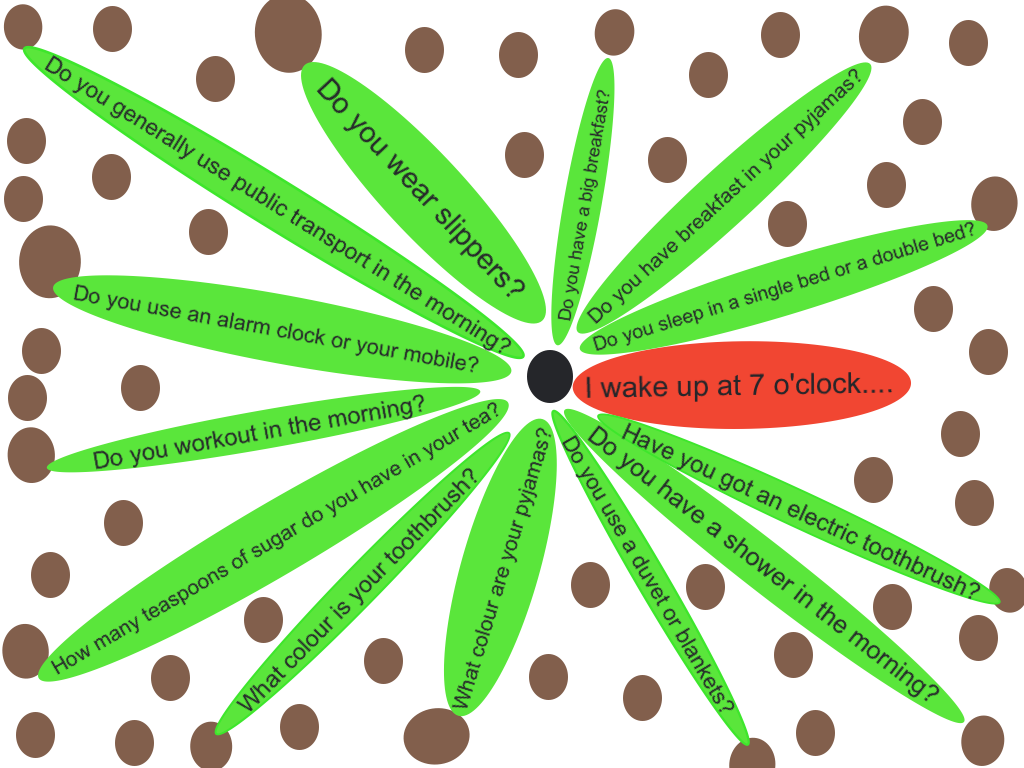


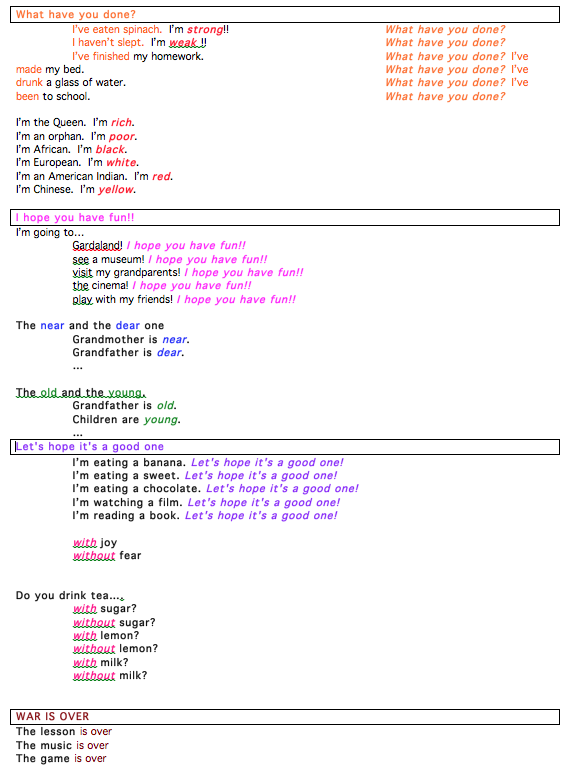




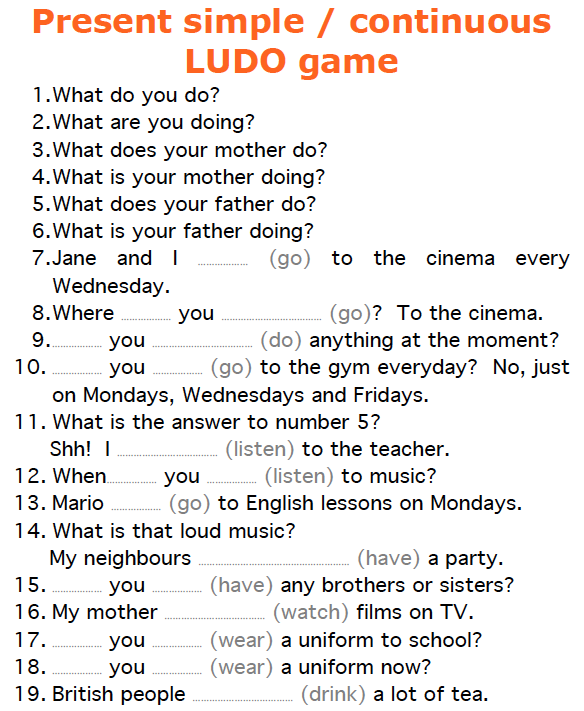


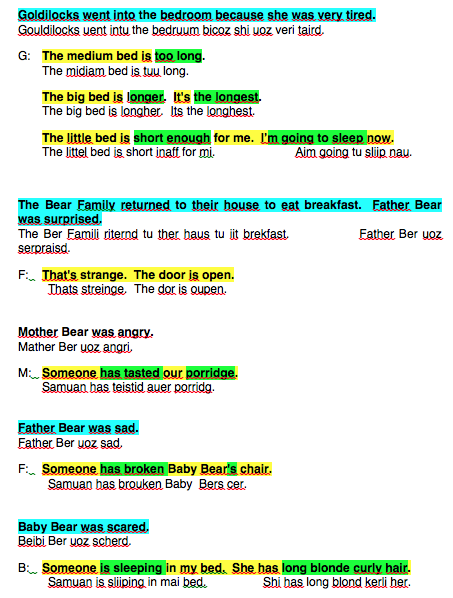
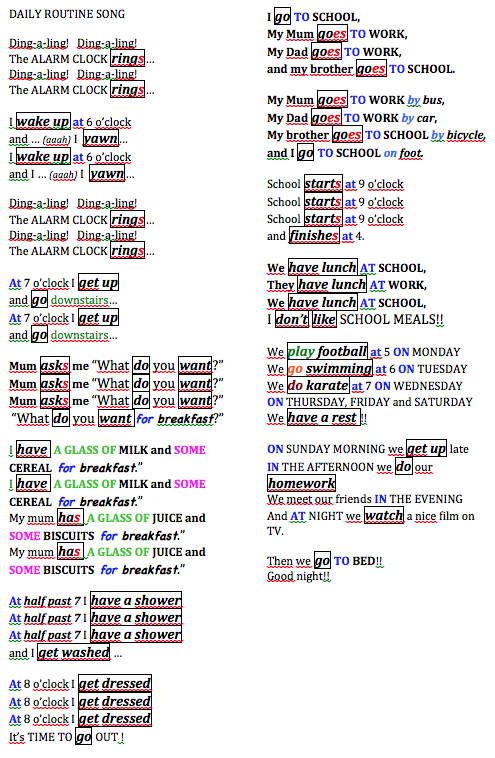

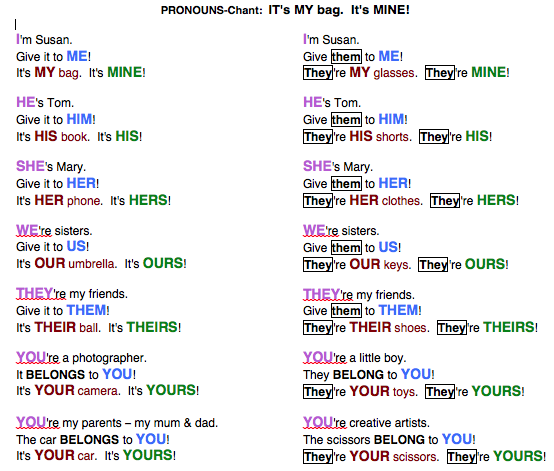



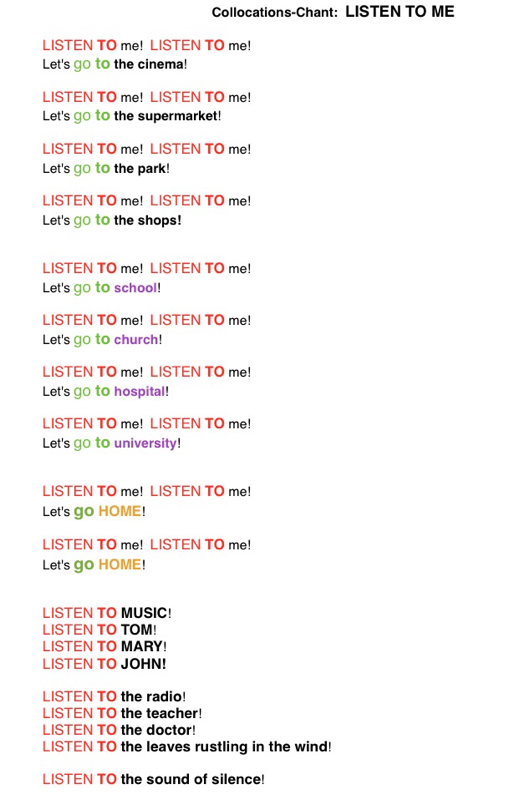















 RSS Feed
RSS Feed





